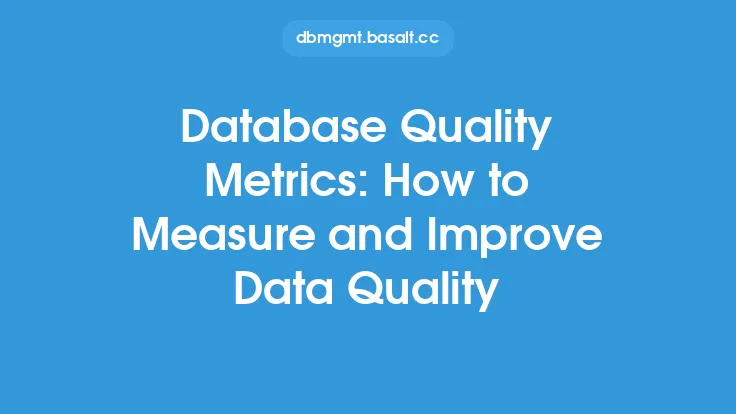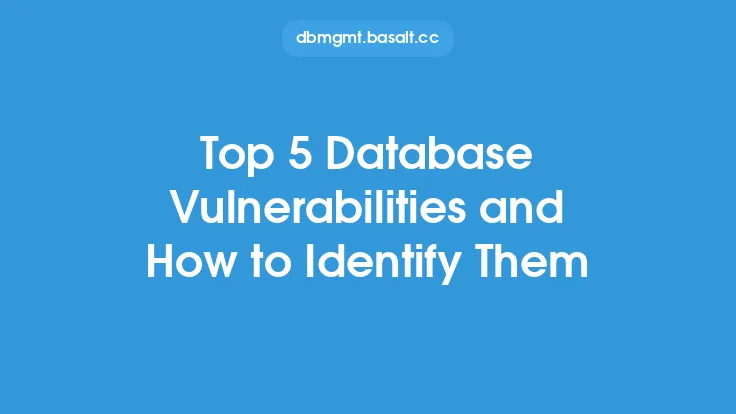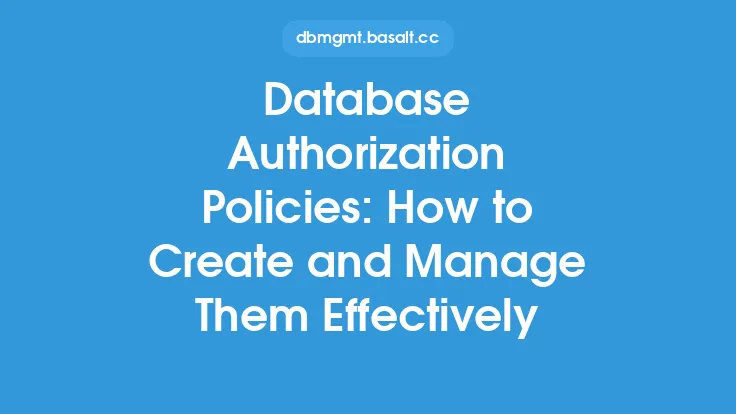Data restoration is a critical process that involves retrieving and recovering data from backups, archives, or other storage systems. It is an essential aspect of database management, as it ensures that data is available and accessible in the event of a disaster, hardware failure, or other data loss scenario. However, data restoration can be a complex and challenging process, especially when dealing with large datasets, complex database systems, and limited resources. In this article, we will discuss the common challenges associated with data restoration and provide guidance on how to overcome them.
Understanding Data Restoration Challenges
Data restoration challenges can arise from various sources, including hardware failures, software corruption, human error, and natural disasters. One of the most significant challenges is ensuring data consistency and integrity. When data is restored from a backup, it may not be in a consistent state, which can lead to errors, inconsistencies, and data loss. Additionally, data restoration can be a time-consuming process, especially when dealing with large datasets, which can impact business operations and productivity. Other challenges include ensuring data security, managing data dependencies, and handling data format changes.
Data Corruption and Integrity Issues
Data corruption and integrity issues are common challenges in data restoration. Corruption can occur due to hardware failures, software bugs, or human error, which can result in data being incomplete, inaccurate, or inconsistent. To overcome these challenges, it is essential to implement data validation and verification processes to ensure that data is accurate and consistent. This can be achieved by using checksums, digital signatures, or other data integrity checks to verify the authenticity and accuracy of the data. Additionally, using data redundancy and replication techniques can help ensure that data is available and accessible even in the event of corruption or loss.
Managing Data Dependencies and Relationships
Data dependencies and relationships can be a significant challenge in data restoration. When data is restored from a backup, it may not be in the correct relationship with other data entities, which can lead to errors and inconsistencies. To overcome this challenge, it is essential to understand the data dependencies and relationships within the database system. This can be achieved by using data modeling and mapping techniques to identify the relationships between data entities and ensure that they are restored correctly. Additionally, using data normalization and denormalization techniques can help simplify data relationships and improve data integrity.
Ensuring Data Security and Access Control
Data security and access control are critical aspects of data restoration. When data is restored from a backup, it may not have the same security and access controls as the original data, which can lead to unauthorized access or data breaches. To overcome this challenge, it is essential to implement robust security and access control measures, such as encryption, authentication, and authorization. This can be achieved by using secure protocols and algorithms to protect data in transit and at rest, as well as implementing role-based access control and auditing mechanisms to ensure that data is accessed and modified only by authorized personnel.
Handling Data Format Changes and Versioning
Data format changes and versioning can be a significant challenge in data restoration. When data is restored from a backup, it may not be in the same format or version as the original data, which can lead to compatibility issues and errors. To overcome this challenge, it is essential to implement data format and versioning management processes to ensure that data is restored in a compatible format. This can be achieved by using data transformation and conversion techniques to convert data to a compatible format, as well as implementing version control mechanisms to track changes to data formats and versions.
Best Practices for Data Restoration
To overcome the challenges associated with data restoration, it is essential to follow best practices and guidelines. These include implementing regular backups and testing data restoration processes, using data validation and verification techniques to ensure data integrity, and implementing robust security and access control measures to protect data. Additionally, using data modeling and mapping techniques to understand data dependencies and relationships, and implementing data format and versioning management processes to ensure compatibility, can help ensure successful data restoration. By following these best practices and guidelines, organizations can ensure that their data is available, accessible, and accurate, even in the event of a disaster or data loss scenario.
Conclusion
Data restoration is a critical process that requires careful planning, execution, and management. By understanding the common challenges associated with data restoration, such as data corruption and integrity issues, managing data dependencies and relationships, ensuring data security and access control, and handling data format changes and versioning, organizations can take steps to overcome them. By following best practices and guidelines, such as implementing regular backups and testing data restoration processes, using data validation and verification techniques, and implementing robust security and access control measures, organizations can ensure successful data restoration and minimize the risk of data loss and downtime.





